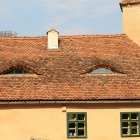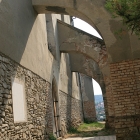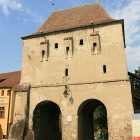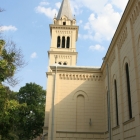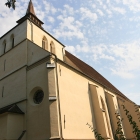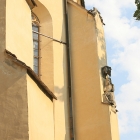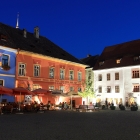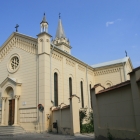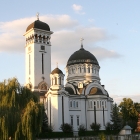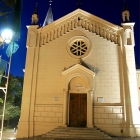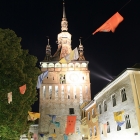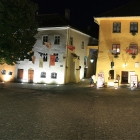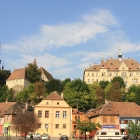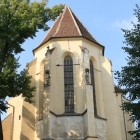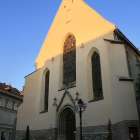Sighisoara, medieval city perfectly preserved
Despite its small size, Sighisoara might be the most beautiful Romanian cities. A charming miniature, that makes you feel like a lucky explorer during a discovery. Sighisoara is one of the cities of Transylvania built by German settlers in the Middle Ages, brought by the Hungarian crown here to lift up the economy. Thus its name is known in several languages as Schäßburg – in German, Segesvár – in Hungarian, Castrum Sex – in Latin or Sighișoara – in Romanian.
For modern visitors, Sighisoara is famous as the birth place of prince Vlad the Impaler, turned into a legend by Bram Stocker as count Dracula. His father, a member of the elite knight’s Order of the Dragon, lived here and controlled the place as subject of Sigismund of Luxembourg, king of Hungary.
In the heart of Sighișoara there is the medieval citadel, very well preserved and one of the last inhabited fortresses of East Europe. The citadel is surrounded by walls of 3 to 15 m height, with battlements, shooting holes, guard roads and the famous towers around which the guild united. Each of the tower is associated with a craftsmen’s guild.
Guilds were forms of organization taken in the Middle Ages by several trades. They resembled today’s trade unions, but also had elements of cartels. They were the first organizations to provide social security for members and the family of a deceased, but also resembled Mafia, with their policy of price-fixing. Guilds usually used secrets and initiation rituals, many of which turned into secret societies practices like the free masonry.
The most famous of these towers is the Clock Tower, turned into a Medieval history museum. The clock, maybe as old as the tower, has 2.4 m in diameter and a mechanism that moves wooden characters that stand for the week days.
Butchers’ tower had glued to it the Barbers’ tower, later demolished. The Blacksmiths’ tower stands out by its different shape from one floor to another. In the highest point of the citadel there is the Jewelers’ tower (or the Goldsmiths’ tower), which, probably due to its high position, has been stroke by a lightening.
Other preserved towers are the Butchers’ tower, standing out of the defence wall, the Rope Makers’ Tower, built on the ruins of Tailors’ Tower, damaged by the explosion of a gunpowder deposit and by the subsequent fire in 1676, Blacksmiths’ Tower, built to protect the church, or the Shoemakers’ Tower, which once had a defense role.
Another mark of the medieval civilization is the wooden staircase, covered like a tunnel, whose purpose was to protect children that were climbing to their school of bad weather.
Climbing now the stairs of the four centuries old stairway you will reach the beautiful Evangelical Church.
The Evangelical Church is documented from 1345 and built in Gothic style, decorated with sculpures and wooden furniture. In this church, in 1506, the representatives of Hungarian and German nobility reunited to sign the act that guaranteed them a monopoly on political life of Transylvania, excluding the numerous but poorer Romanian majority.
The Orthodox cathedral of Sighisoara is built much more recently, after the first world war on Târnava Mare river, after the reunification of Transylvania with Romania, and is dedicated to the Holy Trinity. Not far from Sighisoara, you can visit a larger post-medieval city, Sibiu.
- Home Page
start page - Architecture
landmark buildings - Sacred architecture
places of worship - Nature
landscape photography - Concert
performing artists - Christmas
Santa Claus pictures
- Jooble
jobs for photographers - Escape
an out of control blog - Merry Christmas
The best organizer of Christmas parties - Astro photo
Eclipse hunting and astrological photography

